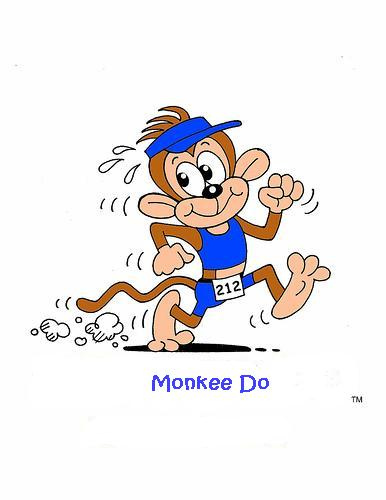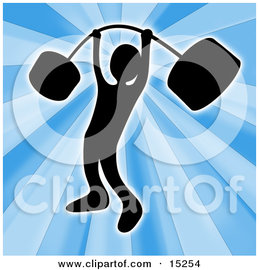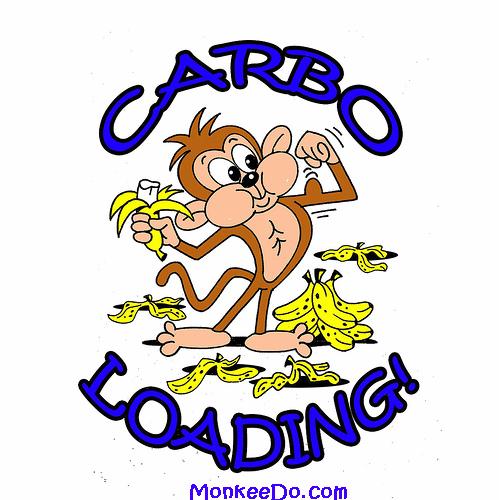Monday, September 21, 2009
Today was a good day
Breakfast: Egg Whites Boiled + Beef Sausage
Snack Handful of Almonds
Lunch: Rotisserie Chicken + Salad
Dinner: Baked Fish + Zucchini
Hit the gym, did 5 Miles on the elliptical machine, about 915 calories burnt, and relaxed in the Steam Room for a few afterwards.
Tuesday, September 1, 2009
Back on Year End Goal!

So with September beginning time to get back on track for the end of the year goals. With that said, we're moving onto a 4 month plan. The key parts of the plan will be similar to the first three months of the year. Food wise, this will be a majority low carb diet, combined with a mix of weight training and cardio.
One goal deadline will be to run a 5K race mid November, so I will be tracking my progress of training over the course of 3 1/2 months. I am starting with about a 1 mile jogging stamina, as of last week.
Weight training, I will be doing about 4 weeks of full body routines, and then decide if I will move to heavier, isolated workouts.
For the low carb portion of my diet, the hardest part will be cutting out beer again...it's been a long, bbq / happy hour filled summer. They also have built a zeppelin hall Beer Garden near my home.....so I've put back on about 12 lbs in the past 3 months. I will be keeping a log, and picture documentary of my meals going fwd. to keep honest with the program as well.
Today
- Breakfast: 2 Boiled Eggs:
- Lunch: steak & chicken stir fry with boiled cabbage.
- Snack: slice of turkey and cheese stick
- Dinner: chicken and sautéed zucchini
Wednesday, April 29, 2009
Loving the outdoors

The treadmill belt offers some help by pulling your feet back underneath your
body, so you are potentially exerting less energy to move your feet and legs
than if you were not on a treadmill.
When you run indoors on a treadmill, you do not have to overcome wind resistance. The lack of wind means you'll spend less energy running four miles on a treadmill than you will running four miles outdoors. However, it may depend on how fast you are running. For the average person, running 5 - 9 miles per hour (mph) will result in little difference. Some studies say outdoor running expends up to 5 percent more
calories; if you run faster than 9 mph, running outdoors could utilize up to 10
percent more calories because you are working harder against wind resistance.
Other studies say there's no difference. One study demonstrated the way to
balance energy use between indoor and outdoor running is to set the treadmill at
an incline (or grade) of 1 percent.
A few good points that I found on a running site explain it the best...
http://news.runtowin.com/2006/07/20/track-vs-treadmill-whats-the-difference.html
Treadmills are softer. You are going to take more of a pounding on asphalt than you would on a treadmill. If you jump into it too fast, you could hurt yourself. However, running on a grass or dirt trail could be even less impact than on the treadmill while still allowing yourself to stretch out a bit and avoid the boredom.
Running outdoors encourages stronger bone growth. Because there is more of an impact, there is more pressure on your muscles and bones which will lead to faster results when you are training.
You don’t have to break the wind on a treadmill. While you will not spend as much energy pushing air out of the way as you might on a bicycle, it still constitutes a large percentage of the energy that you are using. Air may not seem like much, but it takes a lot of work to get it out of your way so that your body can pass through it, and this is only made more difficult when there is a headwind pushing that air towards you. On a treadmill, you aren’t actually moving, so you don’t have to push nearly as much air out of the way.
Running outdoors gets you somewhere. Running is meant as a means of transportation from one place to another by moving over the surface. Running on a treadmill is having the surface move beneath you. It is not quite natural.
Running outdoors is more exciting. I have a definite bias against running on treadmills, mostly because it is so boring. When you run outside, you need to pay attention to where you put your feet, avoiding traffic and other pedestrians, and enjoying mother nature. There are more distractions that can keep you from dwelling on how tired you are, and to give you something to ignore when preparing for a race and learning how to focus.
Treadmills do not allow you to run downhill. At least, I have never seen one that does. For proper working out of the muscles, you need to work downhill and uphill workouts into your training. Always going along a flat or slight incline is not a natural way to move or to train.
The 5 most common treadmill mistakes do not apply outdoors:
Taking it too easy
Stepping off of a moving treadmill
Using the
handrails
Unnatural stride length
Not realizing how much easier it is
Treadmills are safe from cars, but you are not likely to get thrown off of the ground like you can from a treadmill. Getting hit by a car and being thrown by a treadmill are both experiences I do not really care to repeat.
It is tougher to hyper-extend your back outside than on a treadmill. If you do not use at least a 1%-2% grade on the treadmill, you can wind up leaning back as the belt kicks your legs backwards and you can hyperextend your back and hurt yourself. Using a small grade on the treadmill forces you to lean forward, which helps to protect your back.*
Wednesday, April 1, 2009
Back OMG[ON MY GRIND]
So Monday I hit up Legs, went in with Squats, Leg Press, Leg Extensions and they were a little sore yesterday, but today... WOW I'm walking like Forrest Gump in braces!
Tuesday I hit up arms and back, Pullups, Bent rows, curls, pull downs, cable curls.....30min cardio!
My goal for week one will be to drop 4-5lbs which I know is mostly water weight, but what the heck!
Monday, March 30, 2009
Back OMG!
- Hey folk......
I'm back....
I know I failed on keeping up with the Blog the last month and a half!
I did keep up with my workout and meal plan through the 8 weeks, and lost a total of close to 25lbs.....

Starting back up with a new 8 week program that will take me from today to May 25th which is Memorial day, also the beginning of Beach season!
I'm going to keep pretty consistent with the lower carb base, adding in carbs in post workout shakes and meals as I will be upping the weights and lowering my cardio on this plan.....
Here is a sample days food intake....
Breakfast: 2 Boiled Eggs + Protien Shake (40 grams protien)
Snack: Hand Full of almonds
Lunch: Rotisserie chicken or grilled chicken salad
Snack: Cottage Cheese
Pre & Post workout shake (20-25grams protien per shake)
Dinner: baked fish and vegetables.
Tuesday, February 3, 2009
OMG - On My Grind....

Hey Folk,
So day two into week 5 and going strong!
Yesterday hit up the pool in the morning, and kept to the menu...
B-Egg Beaters & Turkey Sausage
S-Handful of Almonds
L-Half of a small Rotisserie chicken.
S-Protien Bar
D-Low Carb Chilli with Cabbage.
Today hit up the weights for a mixed body workout.
I did upper body workout with dumbells, as well as a few sets of goblet squats.
Then followed up with eliptical 825 calories burnt....
Menu... pretty much the same, second half of my little chicken and left over chili.
B-Egg Beaters & Beef Sausage
S-Handful of Almonds
L-Half of a Rotisserie chicken.
S-Protien Bar
D-Low Carb Chilli with Cabbage.
Monday, February 2, 2009
Week 5 enter Water World!

4 weeks done, 15LBS later...Still going STRONG!
What's up good folk, ok so 50% done with the first 8 week program that I stated as an initial goal! I'm right on track for my weight goal to drop 30, with 15lbs down for the first 4 weeks.
Today I step it up for the second half. Partially just do to an increase in energy, after getting used to the workouts, and feeling like I can do even better. Today I started a morning swimming routine, to get me going before work, and to aid in burning excess calories, and getting the metabolism running.
I am going to hit the pool atleast 3-5, days during the work week in the am. I'm going to be continuing with the after work workouts, and stepping up the weight training to match the cardio. Another change will be that I will start to keep a better track of exactly what I do in the gym, to catolouge and rank my workouts.
Gotta drink, drink, drink water....H20 is my friend!
Wednesday, January 28, 2009
Supplements

Everything you need to know about creatine. Is it safe? Are there side effects? Just what is creatine, anyway?
Jamie BellavanceRichard Kreider, Ph.D., chairman of the Department of Health, Human Performance and Recreation and Director of the Exercise and Sport Nutrition Laboratory and Center for Exercise, Nutrition & Preventive Health Research at Baylor University, answers your most common questions about creatine supplementation.Dr. Kreider has published more than 300& sport nutrition articles and abstracts that are published in scientific journals. He is also a Fellow of the American College of Sports Medicine, Fellow of the International Society of Sport Nutrition, and editor-in-chief of the Journal of the International Society of Sport Nutrition.
Wednesday, January 21, 2009
Two weeks down!

Let's see for updates...
I'm on my 3rd week since starting, I've been pretty good with the eating well, trying to keep my protein as high as possible, gets hard at times, especially forgetting to eat snacks. Sometimes the day goes quick and you realized it's been 5 hours or so. But the snacks help to keep everything up to par.
Last Monday the 13th, the day after my last post, I did a weekly weigh in and was down 5lbs, which is pretty good for the first week. My overall goal is about 30LBS in 8 weeks so that puts me ahead of the curve. I worked out MON-FRIDAY with the exception of Thursday, which I used for recovery.
This Monday the 19th I hit up a two-a-day workout, hitting the gym at lunch, but didn't feel like I got a great workout in, so I went back after work, and WENT IN, did 30 min weights, then hit 60 min cardio with the machine registering 850calories burned. Kept on top of the low carb meals and felt pretty good.
My Weigh in for week two was down 4lbs more from the 13th bringing me to a total of 9lbs down in two weeks.
Let's keep it going!
Monday, January 12, 2009
Day 8 - iPhone uncovers iHop! & Hydration!


by Maia Appleby
Don't roll your eyes! The potion for losing that excess body fat is all around you. It covers two thirds of the planet. If you eat right and exercise at the intensity, frequency and duration proper for you, but still can't get rid of a little paunch here and there, you're probably just not drinking enough water.
No need to get defensive. You're actually quite normal. Most people don't drink enough water. Most people are also carrying around a few more pounds than they would be if they did drink enough water. If you can't seem to get that weight off, try drowning your sorrows in nature's magical weight-loss mineral. It works, and here's why:
"What on Earth is 'metabolism', anyway?" People use the term all the time, but ask them what it means and you'll get all kinds of answers. Merriam Webster defines it as, "The process by which a substance is handled in the body." A little vague, but that's really all it means.
There are many forms of metabolism going on in your body right now, but the one everyone is talking about it the metabolism of fat. This is actually something that the liver does when it converts stored fat to energy. The liver has other functions, but this is one of its main jobs.
Unfortunately, another of the liver's duties is to pick up the slack for the kidneys, which need plenty of water to work properly. If the kidneys are water-deprived, the liver has to do their work along with its own, lowering its total productivity. It then can't metabolize fat as quickly or efficiently as it could when the kidneys were pulling their own weight. If you allow this to happen, not only are you being unfair to your liver, but you're also setting yourself up to store fat.
"I've tried it and I couldn't stand it!" The problem is that, though many decide to increase their water intake, very few stick with it. It's understandable. During the first few days of drinking more water than your body is accustomed to, you're running to the bathroom constantly. This can be very discouraging, and it can certainly interfere with an otherwise normal day at work. It seems that the water is coming out just as fast as it's going in, and many people decide that their new hydration habit is fruitless.
Do take heed , though. What is really happening is that your body is flushing itself of the water it has been storing throughout all those years of "survival mode". It takes a while, but this is a beautiful thing happening to you. As you continue to give your body all the water it could ask for, it gets rid of what it doesn't need. It gets rid of the water it was holding onto in your ankles and your hips and thighs, maybe even around your belly. You are excreting much more than you realize. Your body figures it doesn't need to save these stores anymore; it's trusting that the water will keep coming, and if it does, eventually, the flushing (of both the body and the potty) will cease, allowing the human to return to a normal life. It's true. This is called the "breakthrough point."
One recent finding, as irresponsible as it may be, that caffeine increases the body's fat-burning potential has many people loading up on coffee before going to the gym. This finding may hold some degree of truth in it, but caffeine is, in essence, a diuretic, and diuretics dehydrate.
Water is the best beauty treatment. You've heard this since high school, and it's true. Water will do wonders for your looks! It flushes out impurities in your skin, leaving you with a clear, glowing complexion. It also makes your skin look younger. Skin that is becoming saggy, either due to aging or weight loss, plumps up very nicely when the skin cells are hydrated.
In addition, it improves muscle tone. You can lift weights until you're blue in the face, but if your muscles are suffering from a drought, you won't notice a pleasant difference in your appearance. Muscles that have all the water they need contract more easily, making your workout more effective, and you'll look much nicer than if you had flabby muscles under sagging skin.
"Eight glasses a day? Are you kidding?!" It's really not that much. Eight 8-ounce glasses amount to about two quarts of water. This is okay for the average person, but if you're overweight, you should drink another eight ounces for every 25 pounds of excess weight you carry. You should also up this if you live in a hot climate or exercise very intensely.
This water consumption should be spread out throughout the day. It's not healthy at all to drink too much water at one time. Try to pick three or four times a day when you can have a big glass of water, and then sip in between. Don't let yourself get thirsty. If you feel thirsty, you're already becoming dehydrated. Drink when you're not thirsty yet.
Do you think water is yucky? Drinking other fluids will certainly help hydrate your body, but the extra calories, sugar, additives and whatever else aren't what you need. Try a slice of lemon or lime in the glass, or if you really think you hate water, try a flavored water. Just make sure you read the labels. Remember that you're going to be consuming a lot of this fluid.
It's probably a good idea to stop drinking water a good three hours before you go to bed. You know why. "How cold should it be?" This is debatable. Most experts lean toward cold water, because the stomach absorbs it more quickly. There is also some evidence that cold water might enhance fat burning.
On the other hand, warmer water is easier to drink in large quantities, and you might drink more of it without even realizing it. Do whatever suits you, here. Just drink it!
Thursday, January 8, 2009
Day 4
Well it's day four since officially starting my 8 week cycle. First I'll start by saying, the soreness is back! LOL No Pain No Gain, I guess, but I'll admit it's a good pain. It's the type of pain that means your doing something right.
Low Carb!
My energey level is a little low as 4 days of low carb is probably hitting rock bottom before the energy boost once I reach Ketosis. I'm gonna struggle through it, and focus to make it through saturday workout wise.... I figure that If I keep 8 Saturdays in my head it's all down hill! I'll rest physically on Sundays, but use the rest of the days to work out.
Drinking!
Well I did some research and also found that the "Light" beer I was drinking was about 107 calories a can, load up enough of those and that quite a bit of trouble. I've decided to do the entire 8 week program beer and liqour free! (I'm sure my liver will thank me for that as well)
I'm also trying to work 2000 calories minimum per week, outside of my weight lifting routine, doing cardio, I figure that will cover the beers alone that I've been drinking during the holiday season...LOL
So if I averaged 4-5 cans of beer a day, or 2-3 large cans then I'm minus about 500 calories, then workoff another 500 i'm taking down 1000 calories a day from an average december day. Since a pound of fat is about 3000 calories I should be dropping them pretty quickly starting my second or third week, once my metabolism catches up!
Here's a good article with more explanation of the Plan I've chosen to follow from Men's Health!
Monday, January 5, 2009
New Year, Time to strap down

10 Easy Ways to Lose Weight Without Starving
1. Always Eat a Man's Breakfast
No more Lucky Charms—you want some protein and fat. Scrambled eggs and a few sausage links will keep you fuller longer than an airy doughnut will.
2. Eat More!
We're talking three good snacks and three healthful meals. But what do you serve during the bowl game if you can't have chips and dip? Mixed nuts—especially almonds—will satisfy your craving for something crunchy while helping to build muscle.
3. Just Say No to Starches
Foods like pasta, white bread, and potatoes make you fat. If you must have pasta, make yours whole-wheat. Same goes for bread, and swap white potatoes for sweet potatoes. Just don't eat too much!
4. Lift Weights
Yes, you have to hit the gym, and no, lifting beer cans during happy hour doesn't count. The muscles you build will not only improve your performance, they'll stoke your metabolism so you burn calories long after your workout is over.
5. Think Before You Eat
Don't just stuff your face with the stale cookies left over from the holidays, eat what tastes good and what's good for you. Take your time eating; you'll stay fuller longer.
6. But Have Fun Once in a While—or Once a Week
Stifle those cravings for too long, and you'll be miserable and might fall off your new plan forever. Just splurge reasonably—two slices of pizza, not the whole thing.
7. Go Low-Carb
It's the easiest way to drop weight fast. The cravings are hard at first, but it gets easier—especially when you see the results.
8. Run Intervals
It's easier to alternate between hard and easy running instead of going for a long run—especially if you don't like running. Plus, you'll be done faster and burn more fat.
9. Never, Ever Drink Sweetened Soda
But go ahead, have a glass of wine now and then. Low-carb beer is fine, too, in moderation.
10. Don't Fear Fat
It makes you feel full, helps control your appetite, and your body needs it.

